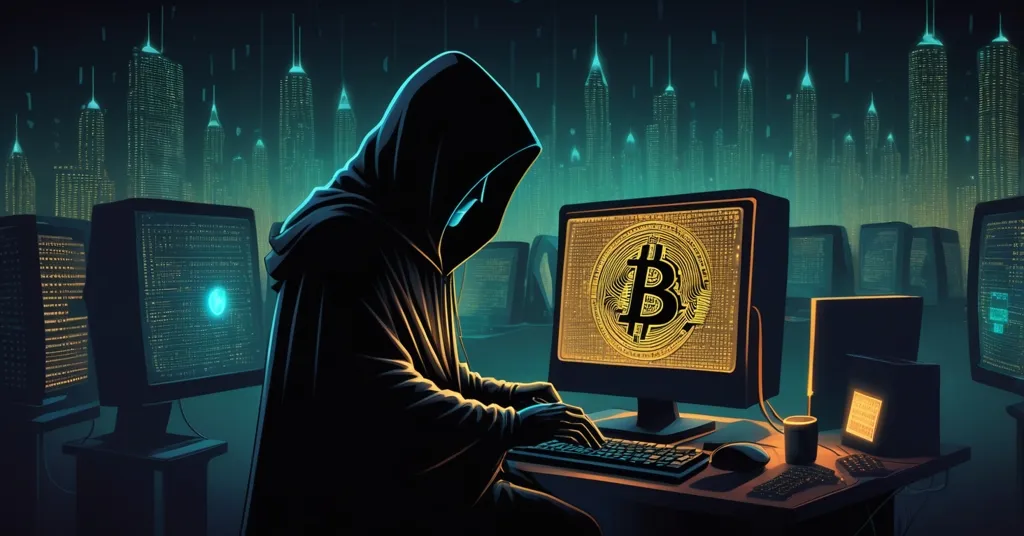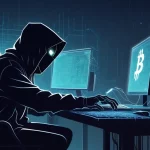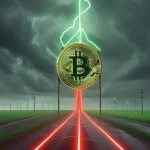Jack Dorsey as Satoshi Nakamoto? New Clues Reignite Bitcoin Creator Mystery

Is Jack Dorsey the Mind Behind Bitcoin? New Clues Fuel the Satoshi Nakamoto Mystery
Jack Dorsey, the tech visionary who built Twitter and now leads Block, is no stranger to shaking up the digital world. But could he be the enigmatic Satoshi Nakamoto, the pseudonymous architect of Bitcoin? A recent wave of speculation from analysts at Baird and other corners of the crypto sphere has unearthed a series of uncanny coincidences, reigniting the decade-long quest to unmask the creator of the world’s first decentralized currency. With Bitcoin’s ethos of freedom and disruption at stake, let’s dive into the evidence, the doubts, and why this mystery still grips us.
- Identity Puzzle: Analysts speculate Jack Dorsey could be Satoshi Nakamoto based on timeline overlaps and technical ties.
- Curious Clues: Key dates, mining shifts, and a California IP address tie Dorsey to Bitcoin’s early days.
- Untouched Fortune: Satoshi’s 1 million BTC, worth nearly $96 billion, remains a tantalizing enigma.
The Case for Dorsey: A Web of Coincidences
The hunt for Satoshi Nakamoto has been crypto’s ultimate whodunit since the Bitcoin whitepaper emerged in 2008, promising a financial system free from centralized control. Over the years, countless names have been floated, but Jack Dorsey’s entry into this speculative lineup feels particularly juicy given his outspoken Bitcoin advocacy. Analysts at Baird have pointed to a string of peculiar timeline alignments that seem to whisper Dorsey’s name. Take November 19, 2008, the date of Satoshi’s first post on the BitcoinTalk forum—a platform where early crypto enthusiasts hashed out ideas. That date just so happens to be Dorsey’s birthday. Years later, it also coincided with Block’s investor day, a connection too tidy for some to dismiss as mere chance.
Then there’s the family angle. Baird researchers noted that significant early Bitcoin milestones—key moments like the mining of certain blocks—align with the birthdays of Dorsey’s parents. Statistically, this raises eyebrows, though it’s hardly a smoking gun. Beyond dates, Dorsey’s technical chops add fuel to the fire. Since 1996, he’s been linked to the cypherpunk mailing list, a digital hangout for privacy-obsessed coders and activists who dreamed of using cryptography to shield individuals from overreaching governments and corporations. Bitcoin’s ideological roots trace directly to this movement. Dorsey’s skills in C and Python, the languages behind Bitcoin’s original codebase, further align with what we know of Satoshi’s toolkit.
Even more cryptic is an early Bitcoin address containing the string “jD2m.” Some theorists interpret this as “Jack Dorsey 2 Mint,” possibly referencing Mint Plaza in San Francisco, where Dorsey lived during Bitcoin’s infancy. For those new to the space, a Bitcoin address is a unique identifier on the blockchain—think of it as a digital mailbox for sending and receiving BTC. Early users sometimes embedded personal nods or jokes in metadata, so this interpretation, while speculative, isn’t entirely far-fetched. It’s a breadcrumb, not a blueprint, but it keeps the conspiracy mill grinding. For deeper insights into this speculation, check out this analysis on Jack Dorsey’s potential ties to Bitcoin.
Other technical clues pile up. Satoshi’s mining activity— the process of validating transactions and earning new Bitcoin through computational puzzles—shifted noticeably around February 2009. That’s roughly when Dorsey founded Square, later rebranded as Block, a company now deeply invested in Bitcoin integration. The theory suggests Satoshi stepped back from mining to focus on this new venture. Adding to the intrigue, a 2009 Internet Relay Chat login by Satoshi traced to a California IP address places the activity in the Bay Area, Dorsey’s home turf at the time. Picture an IP address as a rough digital postmark—it’s not a precise location, but it narrows the field. Alone, none of these points scream “case closed,” but together, they weave a tantalizing, if circumstantial, narrative.
Dorsey’s Response: It’s Not About the Name
When confronted with the speculation by Jeff Cantwell of Seaport Research, Dorsey didn’t flinch. His response was classic Bitcoin maximalist—focused on the tech, not the gossip.
“If it was important to Satoshi, there is a simple way they can prove who they are, so we’ll wait for that day.”
He’s pointing to a cryptographic truth: Satoshi, whoever they are, could sign a message with the private key tied to their early Bitcoin wallet, instantly proving their identity. That this hasn’t happened suggests anonymity was always the point. Dorsey’s stance reflects Bitcoin’s core strength— it’s a trustless system where code and community consensus reign supreme, not individual egos. Block’s CFO, Amrita Ahuja, couldn’t resist a playful jab during an investor call, though, tying the speculation to a personal milestone.
“He may or may not be Satoshi, but it is his birthday today.”
Dorsey’s dismissal of the identity obsession aligns with the ethos we champion: decentralization over personality cults. Bitcoin doesn’t need a face to disrupt traditional finance, and perhaps that’s the real genius of Satoshi’s vanishing act.
Why Dorsey Might Not Be Satoshi: The Counterpoints
Before we get carried away with birthday coincidences and IP breadcrumbs, let’s play devil’s advocate. The case against Dorsey being Satoshi is as compelling as the case for him. First off, consider the timeline. In 2008 and 2009, Dorsey was neck-deep in building Twitter into a global phenomenon while juggling other entrepreneurial ventures. Crafting Bitcoin—a protocol requiring not just coding wizardry but a deep understanding of economics, cryptography, and game theory—would have demanded an almost superhuman time commitment. Could someone so publicly visible have pulled that off under a pseudonym without a single leak? It strains credulity.
Then there’s the coding style. While Dorsey knows C and Python, Bitcoin’s early codebase reflects a meticulous, almost academic approach to problem-solving, peppered with quirks some attribute to a specific breed of cryptographer. Dorsey’s known projects, by contrast, lean toward user-focused, scalable tech—not the kind of niche, privacy-obsessed work Bitcoin represents. Longtime crypto OGs often point to other early contributors like Hal Finney, a software engineer who received the first Bitcoin transaction from Satoshi and whose forum posts eerily mirror Satoshi’s style. Finney, now deceased, remains a stronger candidate in many eyes, with far less public baggage than a billionaire like Dorsey.
Geographic and mining clues also falter under scrutiny. California is a tech hub—thousands of coders could have used that IP range in 2009. Mining pattern shifts could just as easily reflect Satoshi handing off duties to others or scaling back for unrelated reasons. Without hard data, like a signed message or leaked correspondence, this remains a fun thought experiment, not a conviction. And let’s be blunt: if Dorsey were sitting on Satoshi’s stash, valued at nearly $96 billion, would he really need to hustle with Block? Forbes pegs his net worth at $4.7 billion—hardly chump change. The untouched fortune, tracked via blockchain transparency (meaning we can see the coins haven’t moved), might simply belong to someone who’s gone for good, not a living tech titan.
Satoshi’s Fortune and Bitcoin’s Current Reality
Speaking of that fortune, let’s zoom in on the numbers driving half this obsession. Satoshi’s wallet, or rather a collection of addresses tied to the earliest mined blocks, holds roughly 1 million BTC. At Bitcoin’s current trading price of $86,540, that’s a staggering $96 billion—enough to rival the wealth of billionaires like Bill Gates. These coins, mined in Bitcoin’s infancy through block rewards (a payout for verifying transactions), have sat dormant since at least 2011, visible on the public ledger but unspent. For new readers, this dormancy is trackable because Bitcoin’s blockchain records every transaction forever—there’s no hiding, just watching.
The financial intrigue is obvious. If Dorsey is Satoshi, his personal wealth might explain why the stash remains untouched—he doesn’t need it. But it also raises ethical questions. Unmasking Satoshi could expose them to legal risks, from tax claims to lawsuits, not to mention personal danger given the fortune at stake. This ties directly to our advocacy for privacy: Satoshi’s anonymity isn’t just a quirk, it’s a shield, embodying the freedom Bitcoin promises. Yet, the flip side nags—would knowing the creator shift public trust in a supposedly trustless system? It’s a paradox worth pondering.
Meanwhile, Bitcoin itself isn’t riding the high of this mystery. At $86,540, BTC is down over 31% from its all-time high in October and 8% year-to-date. Market volatility remains the great equalizer—Satoshi’s identity won’t fix bearish trends or regulatory headwinds. It’s a reminder that while we chase digital ghosts, the real story is Bitcoin’s resilience as a protocol, not who coded it.
The Broader Satoshi Mystery: Why We Can’t Let Go
Dorsey isn’t the first name tied to Satoshi, nor will he be the last. Past suspects include Dorian Nakamoto, a systems engineer with an unfortunately similar moniker; Nick Szabo, a cryptography pioneer whose writings predate Bitcoin’s concepts; and Adam Back, the Hashcash creator now leading Blockstream. Then there’s Craig Wright, the Australian cryptographer whose brazen claims to be Satoshi have been dismantled as a shameless grift, most recently by a British High Court ruling that obliterated his credibility. Each theory has flared and faded, leaving us no closer to the truth. So why does Dorsey’s name hit different? Perhaps it’s his visible Bitcoin passion—Block’s push for BTC payments and mining initiatives screams maximalist energy. But passion isn’t proof, and we’re still sifting through shadows.
This obsession reflects deeper currents in crypto culture. It’s a tug-of-war between anonymity and accountability, between revering Bitcoin as a faceless revolution and craving a hero to pin it on. Satoshi’s disappearance around 2011, after handing off development to others, was deliberate—a middle finger to centralized authority, proving the system could thrive without a leader. That aligns with our push for effective accelerationism: let’s speed toward a decentralized future, no matter who lit the fuse. Yet, there’s a counter-narrative. Some argue unmasking Satoshi could humanize Bitcoin, making it more palatable to skeptics or regulators. I’d counter that it risks the opposite—turning a movement into a cult of personality, undermining everything Bitcoin stands for.
Bitcoin’s early days add context to this fixation. Launched amid the 2008 financial crisis, it was a radical answer to bank bailouts and fiat mismanagement. Satoshi’s forum posts, brimming with cypherpunk ideals, painted a vision of peer-to-peer money free from middlemen. Their exit cemented the mythos—here was someone who built a world-changer and walked away. Whether Dorsey fits that profile or not, the community’s hunger for answers reveals our own contradictions: we worship a trustless system yet can’t trust the unknown.
What’s Next in the Hunt for Satoshi?
So, where does this leave us? The Jack Dorsey-Satoshi theory is a hell of a yarn—packed with coincidences that tantalize but don’t convince. It’s more suited to a late-night crypto Twitter thread than a courtroom. And maybe that’s the beauty of it. Bitcoin doesn’t care if Dorsey, Finney, or some random coder in a basement wrote the first line of code. It’s a beast of consensus, outgrowing its creator with every block mined. Still, if a signed message from Satoshi’s key ever drops, linking to Dorsey or anyone else, I’d bet my last satoshi the internet would implode. Until then, this mystery is Bitcoin’s ultimate Easter egg—a nod to the power of anonymity in a world hell-bent on exposure.
Key Takeaways and Burning Questions
- Who is speculated to be Satoshi Nakamoto in this latest theory?
Jack Dorsey, the founder of Twitter and CEO of Block, is under scrutiny due to timeline coincidences and his deep Bitcoin advocacy. - What evidence connects Jack Dorsey to Bitcoin’s creation?
Analysts cite Satoshi’s first BitcoinTalk post on Dorsey’s birthday, milestones matching his parents’ birthdays, an early Bitcoin address possibly hinting at his name, mining activity shifts around Block’s founding, and a California IP address from 2009. - Why does Satoshi’s $96 billion fortune keep this mystery alive?
The untouched 1 million BTC stash represents a massive unclaimed treasure, fueling speculation—if Dorsey is Satoshi, his financial independence might explain the dormancy. - How does Dorsey address the Satoshi speculation?
He downplays its relevance, stressing Bitcoin’s community-driven nature and noting Satoshi could prove their identity with a cryptographic signature if they wished. - What are the arguments against Dorsey being Satoshi?
Skeptics highlight his packed schedule during Bitcoin’s creation, the mismatch in coding style, and the lack of definitive proof, suggesting figures like Hal Finney remain more plausible candidates. - How does the Satoshi mystery reflect crypto’s core tensions?
It mirrors the clash between anonymity and accountability, testing whether Bitcoin’s trustless ideal can coexist with our human urge to name its creator. - Why does Satoshi’s anonymity matter to Bitcoin’s ethos?
It embodies decentralization and privacy, proving a financial revolution doesn’t need a figurehead—Satoshi’s absence is as powerful as their invention.
As Bitcoin forges ahead, pushing boundaries of finance and freedom, the question of Satoshi’s identity lingers like a ghost in the machine. Whether Jack Dorsey holds the key or not, the real triumph is a system that thrives without needing to know. That’s the ultimate middle finger to the status quo—and a reminder why we’re all here, accelerating toward a decentralized tomorrow, one block at a time.


